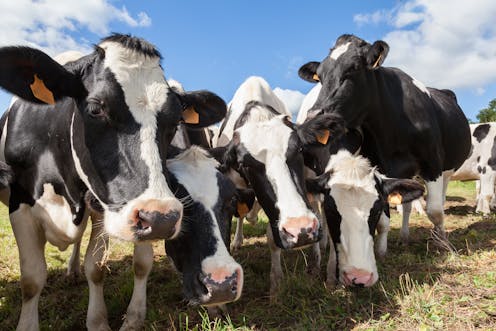Eradicating cattle disease M. bovis in New Zealand may be costly, even impossible, but we must try
- Written by Richard Laven, Associate Professor Production Animal Health, Massey University

In May this year, the New Zealand government decided that it would attempt to eradicate Mycoplasma bovis, a bacterial disease that affects cattle.
A phased eradication means that an additional 126,000 livestock will need to be culled, at an estimated cost of NZ$886 million.
Here’s what we know, what we don’t know and what’s at stake.
Read more: Australian agriculture’s biggest threat needs a global approach
How do we know this is a new incursion?
M. bovis causes mastitis and arthritis in adult cattle and pneumonia in calves. It is found around the world, but New Zealand was one of the last disease-free countries until the detection of infected cows on a dairy farm in July 2017.
We can’t be sure that M. bovis didn’t arrive in New Zealand before the current outbreak, but the Ministry of Primary Industries has tested for the disease over the years and not found it. This has involved checking animals with symptoms similar to those caused by M. bovis as well as large-scale test of bulk tank milk in 2007.
In addition, all countries with M. bovis – including Australia, where less than 4% of dairy herds are affected – have had outbreaks of untreatable mastitis and arthritis due to M. bovis. No such outbreaks were recorded in New Zealand until July 2017.
In Australia, the disease was first reported in the 1970s, but it was not until 2006 that it was seen in the main dairying areas of New South Wales and Victoria where it caused outbreaks of mastitis. It is difficult to prove a negative and we certainly don’t have enough data to show it was definitively not in New Zealand before 2015. But the history of the disease in Australia shows that it can be detected even if it is rare.
Furthermore, the evidence so far from the investigation of the outbreak has been that all the infected farms can be traced back to cattle movements. If the disease had been here before, then tracing would likely have identified clusters of farms with no connections.
Is eradication feasible?
We do not currently know how the disease came into New Zealand. The only likely route, via imports of infected cattle, has been ruled out because live cattle imports ceased before 2015. In any case, live cattle imports have only come from Australia and the strain of bacteria in New Zealand is not the Australian one. Semen, embryos and illegal imports of veterinary products such as vaccines remain the most likely source, but all of these are very low risk. Although M. bovis can survive in these products, the chance of them being infected and that infection spreading to cattle is very low.
Without knowing where the disease came from, we cannot prevent it happening again. However, the risk of semen or embryos bringing in disease hasn’t changed in the last 20 years, so if it did indeed arrive via this route, it was simply bad luck.
So even if – after eradication – we did nothing to change the way semen, embryos or vaccine imports are regulated, it is possible that New Zealand would still remain free of M. bovis.
How can we get rid of M. bovis?
Authorities will use a systematic process of testing to identify infected herds. The biggest component will be testing the bulk tank milk of all dairy herds in the country. Tracing from infected herds will help to identify more infected herds and more traces. This is effectively a continuation of the current process with the aim of eliminating the disease.
The key problem with eradication is that currently the whole herd needs to be culled if one animal is infected because infection can only be detected at the herd level. This comes with significant cost and negative impact on affected farmers.
However, culling entire herds doesn’t necessarily influence the chances of a successful eradication process. The main issue is that we currently do not know exactly how many infected cattle or infected farms there are. It is going to take time to identify all the infected farms and it is possible that the number is much higher than the models suggest. This could make eradication impossible.
Tracing animal movements between farms is another key issue, and the lack of accurate recording is hindering our response to the outbreak. For an eradication to be successful, farmers have to get better at keeping track of where animals are moved.
The decision to eradicate the disease is based on science, but it is not a scientific decision alone. Rightly, it is a political call, with the decisions being taken by the government with support from the industry. Eradication may prove to be impossible, but that does not mean we shouldn’t try. It just means that, unfortunately, the disease had spread far more widely than our current models suggest.
Authors: Richard Laven, Associate Professor Production Animal Health, Massey University




